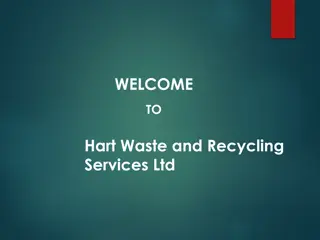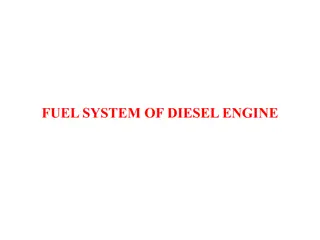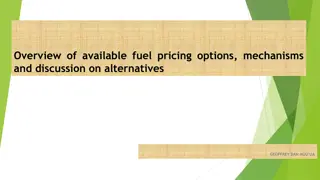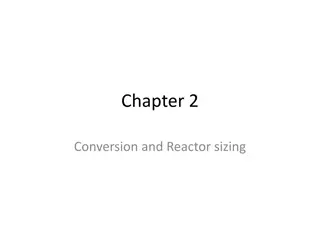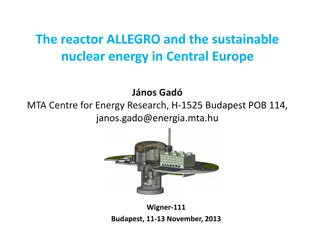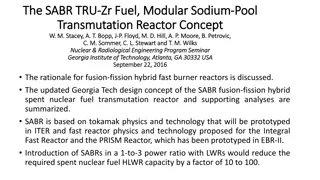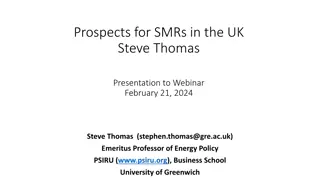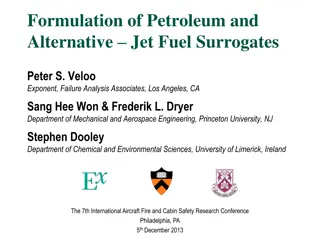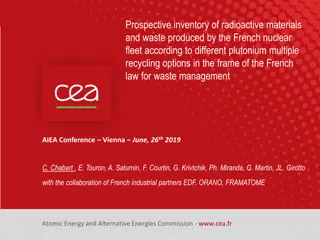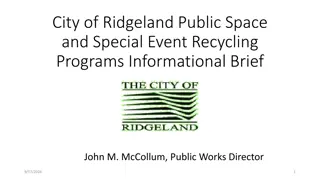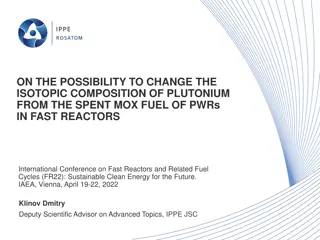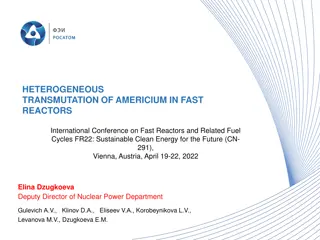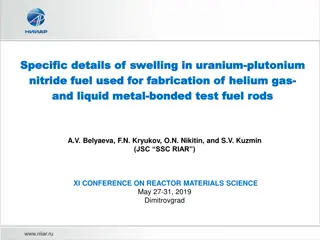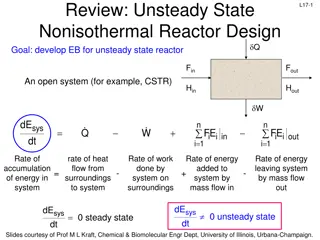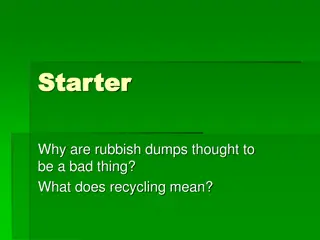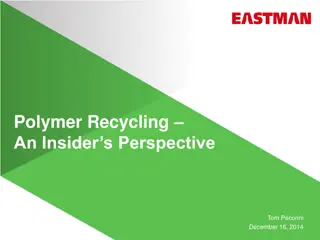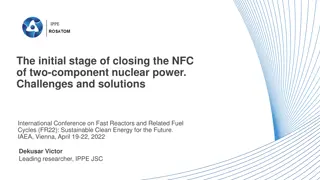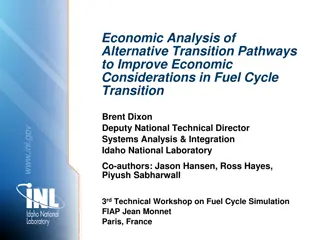Fuel Composition Transition Modeling in Two-Stage Recycling Reactors
Modeling the transition of fuel composition in a two-stage recycling reactor scenario poses a unique challenge that previous versions of VISION were unable to address. By tracking fuel mass and isotopics through various stages of the fuel cycle, VISION now enables the modeling of reactors with recipe-based isotopics, fuel vintage indexing, and improved discharge calculations. The ability to simulate transitions between cores without shutdowns enhances the reactor simulation capability significantly.
Download Presentation

Please find below an Image/Link to download the presentation.
The content on the website is provided AS IS for your information and personal use only. It may not be sold, licensed, or shared on other websites without obtaining consent from the author. Download presentation by click this link. If you encounter any issues during the download, it is possible that the publisher has removed the file from their server.
E N D
Presentation Transcript
Fuel Composition Transition Modeling Ross Hays Idaho National Laboratory Technical Workshop on Fuel Cycle Simulation
The Dilemma We need to model a two-stage recycling reactor scenario Stage 1 High breeding ratio Long fuel residency time Lower burnup Stage 2 Low breeding ratio Shorter fuel residency Higher burnup The reactor transitions between cores gradually, without shutting down Previous versions of VISION could not do this.
Background VISION tracks fuel mass through various fuel cycle stages Isotopics can be calculated Implicitly (total mass at fixed composition) Explicitly (individually tracked/decayed) Buffers for different stages Mining, Conversion, Enrichment Reactor Storage Reprocessing, Fabrication Disposal Etc. Flows move material from buffer to buffer
Modeling Fuel in Reactors Within the reactor module, VISION now: Uses recipe-based isotopics Tracks fuel in integer bits per timestep (one per reactor) Has an index for Fuel Vintage Two values: New, Previous Can change fuel recipe w/o reactor restart Irradiation advancement only for fully fueled reactors Improved discharge/advance prioritization Previous recipe Earliest pass Improved discharge calculations Surplus fuel (due to shortened irradiation time) Shutdown discharge (can be made burnup dependent) Refueling discharge
Modeling Fuel in Reactors New Startup Discharge Fuel In Reactors Refueling Retire- ment Previous Recipe New Recipe Flow Diagram (Simplified) Time in Reactor
Example Transition through six sequential fuel recipes Pass 0 is externally derived Pass 1, 2 are recycled transition stage recipes High breeding 5.5 year irradiation time Pass 3, 4, 5 are recycled equilibrium stage recipes Low breeding 4.5 year irradiation time Lower pass material utilized preferentially when available Prevents accumulation of low-pass material Prolongs evolution to equilibrium in some systems Pass 0 can be used anytime as a backstop supply
Example (Startup) Feed Discharge
Example (Transition to Equilibrium) Pass 3+ discharged at 4.5yr Pass 2- discharged at 5.5yr
Observations Integers are easier to manage than floats Book-keeping is straight-forward, until upset conditions must be included. What-if s include: Fuel supply shortage Coincident shut-down or startup
Discussion What issues have you encountered in extending a model? What have you been surprised to find or learn? How would you change things if starting from scratch? Which assumptions are the most limiting to the results? Which are the most easily generalized within a the model? How should one handle the first core load, where batches are not fully irradiated at discharge, and do not require full equilibrium fissile loading?
Modeling Fuel in Reactors Previous versions of VISION tracked total mass by Reactor type Recycling pass Irradiation timesteps There were several drawbacks Floating point underflow errors Poor handling of fuel supply shortfalls Irradiation time, batch sized fixed for each reactor An improved method was needed


